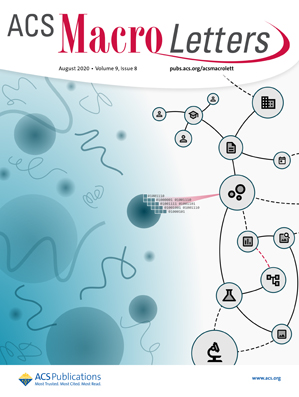Sustainable development of electroencephalography materials and technology
IF 5.2
Q1 POLYMER SCIENCE
引用次数: 0
Abstract
Electroencephalogram (EEG) is one of the most important bioelectrical signals related to brain activity and plays a crucial role in clinical medicine. Driven by continuously expanding applications, the development of EEG materials and technology has attracted considerable attention. However, systematic analysis of the sustainable development of EEG materials and technology is still lacking. This review discusses the sustainable development of EEG materials and technology. First, the developing course of EEG is introduced to reveal its significance, particularly in clinical medicine. Then, the sustainability of the EEG materials and technology is discussed from two main aspects: integrated systems and EEG electrodes. For integrated systems, sustainability has been focused on the developing trend toward mobile EEG systems and big‐data monitoring/analyzing of EEG signals. Sustainability is related to miniaturized, wireless, portable, and wearable systems that are integrated with big‐data modeling techniques. For EEG electrodes and materials, sustainability has been comprehensively analyzed from three perspectives: performance of different material/structural categories, sustainable materials for EEG electrodes, and sustainable manufacturing technologies. In addition, sustainable applications of EEG have been presented. Finally, the sustainable development of EEG materials and technology in recent decades is summarized, revealing future possible research directions as well as urgent challenges.脑电图材料和技术的可持续发展
脑电图(EEG)是与大脑活动有关的最重要的生物电信号之一,在临床医学中发挥着至关重要的作用。在不断扩大的应用领域的推动下,脑电图材料和技术的发展引起了广泛关注。然而,目前仍缺乏对脑电图材料和技术可持续发展的系统分析。本综述探讨脑电图材料与技术的可持续发展。首先,介绍脑电图的发展历程,揭示其意义,尤其是在临床医学中的意义。然后,从两个主要方面讨论脑电图材料和技术的可持续发展:集成系统和脑电图电极。在集成系统方面,可持续发展的重点是移动脑电图系统和脑电信号大数据监测/分析的发展趋势。可持续性与微型化、无线、便携和可穿戴系统有关,这些系统与大数据建模技术相结合。就脑电图电极和材料而言,可持续性已从三个方面进行了全面分析:不同材料/结构类别的性能、脑电图电极的可持续材料以及可持续制造技术。此外,还介绍了脑电图的可持续应用。最后,总结了近几十年来脑电图材料和技术的可持续发展,揭示了未来可能的研究方向以及亟待解决的挑战。
本文章由计算机程序翻译,如有差异,请以英文原文为准。
求助全文
约1分钟内获得全文
求助全文
来源期刊
CiteScore
10.40
自引率
3.40%
发文量
209
审稿时长
1 months
期刊介绍:
ACS Macro Letters publishes research in all areas of contemporary soft matter science in which macromolecules play a key role, including nanotechnology, self-assembly, supramolecular chemistry, biomaterials, energy generation and storage, and renewable/sustainable materials. Submissions to ACS Macro Letters should justify clearly the rapid disclosure of the key elements of the study. The scope of the journal includes high-impact research of broad interest in all areas of polymer science and engineering, including cross-disciplinary research that interfaces with polymer science.
With the launch of ACS Macro Letters, all Communications that were formerly published in Macromolecules and Biomacromolecules will be published as Letters in ACS Macro Letters.

 求助内容:
求助内容: 应助结果提醒方式:
应助结果提醒方式:


